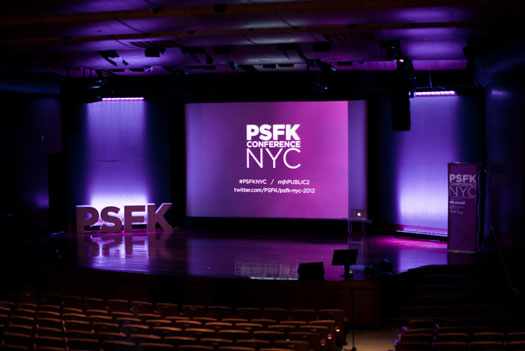Last Friday we attended the annual PSFK conference in New York City to observe new trends in digital design and user behavior. Here are the key takeaways:
Better Living Through Big Data
The theme for this year’s conference was “Live, Work, Play Better”, and various panels acknowledged the importance of utilizing big data to come up with more user-centric “human” designs. Dennis Mortensen, founder and CEO of x.ia, explained how his artificially intelligent personal assistant, Amy, emulates the ideal human-like experience by scheduling meetings through e-mail. With the rise of mobile and IoT devices, data is creating connections not only to our own personal devices, but to one another. As Marcela Sapone, CEO at Alfred, noted, through the power of big data, there is an “overarching cultural acceptance of collaborating and sharing more”.
Digital Design Puts Mobile First
According to Manoush Zomorodi, on average people check their phones around 60 times a day, clocking in at over 2 hours a day. As mobile usage continues to rise, digital designers are starting to put mobile first when it comes to creating user experiences. For instance, boutique hotel CitizenM provides its “Mobile Citizens” with a “mood pad” tablet to control everything from lighting, to room temperature, and even infotainment system in each room. Also putting mobile front and center is Toca Boca, a design studio that makes digital apps for the “mobile-native” kids.
Shared Economy Impacts Design
Another ongoing trend reflected in the design community is the rapid expansion of the shared economy. NeueHouse, for example, is an ambitious startup that aims to become the “Airbnb for the creatives” by creating shared office spaces designed to cultivate hospitality and design culture. Similarly, Tactivate is working on creating shared workspace for veterans, furnished with innovative office furniture designed for mobility and collaboration. The aforementioned CitizenM is also pushing for shared office and living space in its hotel design.
Uniting Fashion And Tech With Design
We have long observed the ongoing convergence of fashion and technology, and the design community has seemed to realize its vital role in uniting the two forces as well. Manufacture NY, led by Amanda Parkes, is building a next-gen innovation center—a tech-forward fashion incubator that feels like a design studio— that aims to fuse the language and process of fashion and tech with design.
Image courtesy of PSFK


